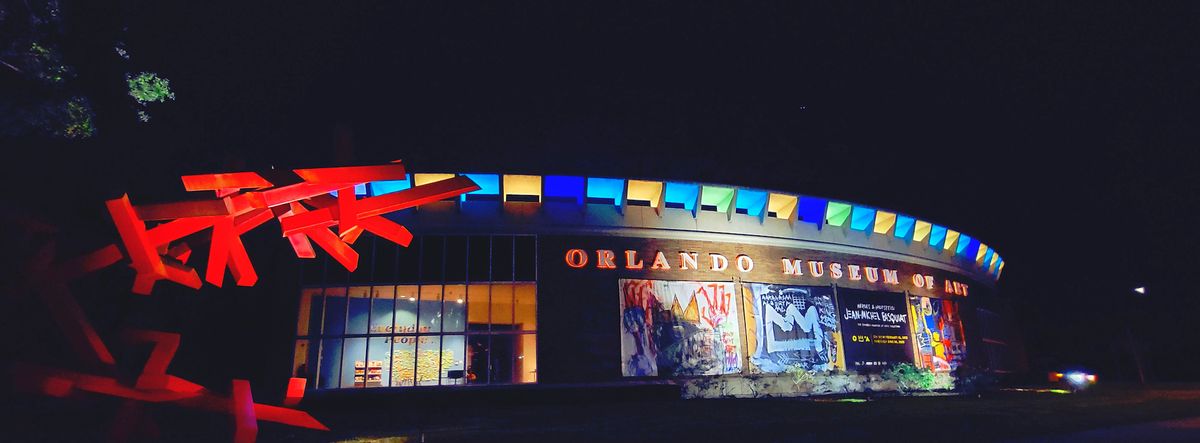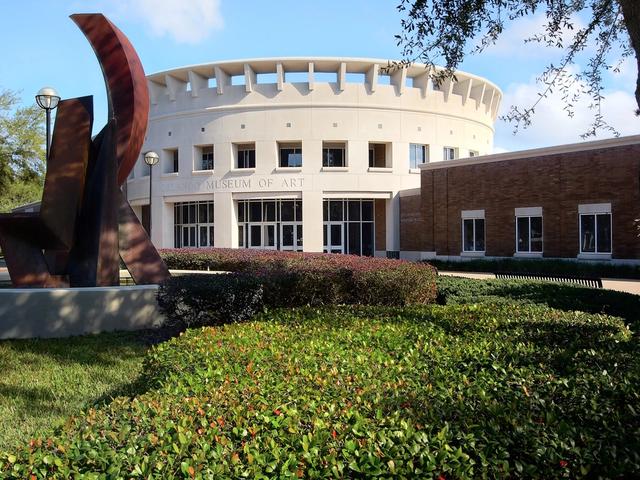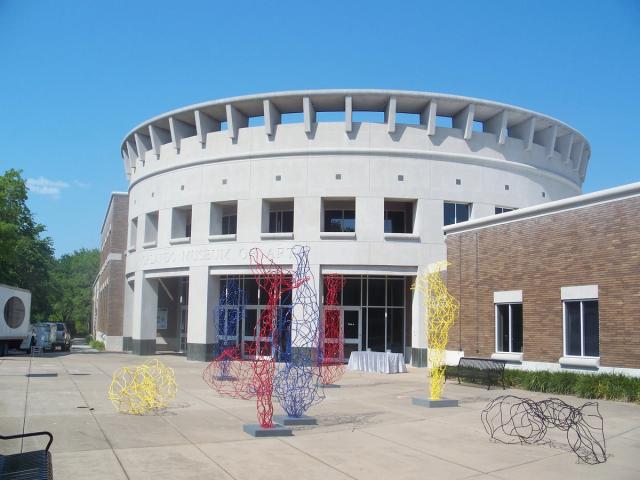Last June, the Federal Bureau of Investigations (FBI) raided Florida’s Orlando Museum of Art, seizing all 25 paintings in its exhibition Heroes & Monsters: Jean-Michel Basquiat, the Thaddeus Mumford, Jr. Venice Collection based on concerns that they were forgeries. That raid effectively closed the exhibition, and now the other shoe has dropped: the American Alliance of Museums (AAM) put the museum, a member of the association since 1971, on probation, threatening the institution’s accreditation.
Shortly after the raid, the Orlando museum’s director and chief executive, Aaron De Groft, was fired by the board of trustees and the chairwoman of the board, Cynthia Brumback, was forced out of her role in December, all seemingly as a result of the Basquiat fiasco, which had embarrassed the institution and brought its practices into question.
The length of the probation is not a set period of time but is “based on the museum’s particular compliance issues” as determined by the association’s accreditation commission, according to an AAM spokesperson. Placing a member institution on probation is rare but happens. “At any given time, fewer than 1% of accredited museums are on probation,” the spokesperson says. What a museum is required to show this commission in order to get off probation “is based on the specific situation”.
Doubts about the authenticity of the 25 artworks, which came to public notice for the first time in 2012, grew significantly after the museum’s exhibition of them was announced. The paintings were done on cardboard, which is not inconsistent with Basquiat’s manner of work, but the specific type of cardboard was not in use until 1994, six years after the artist’s death at the age of 27. All 25 paintings, which purportedly were painted in 1982, were purchased for $5,000 by a television writer, Thad Mumford, who kept them in a rented storage locker. The paintings were rediscovered in 2012 after Mumford failed to pay the rent for the locker and sold to a number of collectors who loaned these pieces to the Orlando museum.
The intentional sale of art known to be fake is a federal crime, which is why the FBI was investigating these specific artworks and their provenance. The agency had requested information from museum officials about these paintings, but their requests were ignored. The museum then paid a Basquiat expert and associate professor at the University of Maryland, Jordana Moore Saggese, $60,000 to look at the paintings to determine their authenticity. At first, Saggese accepted some as actual works by Basquiat, but not long afterwards told museum officials that she had reconsidered the attribution and did not want her name associated with the exhibition. The museum’s director, De Groft, reacted angrily to her request, according to an affidavit filed by the FBI, sending her a threatening email, stating, “You want us to put out there you got $60 grand to write this? OK, then. Shut up. You took the money. Stop being holier than thou.”
“There’s just one red flag after another,” says Gary Vikan, former director of the Walters Art Museum in Baltimore. “Ignoring the request from the FBI, the $60,000 payment to someone in Maryland. The whole idea seemed to be to just to put these paintings in the public domain, claim them to be authentic and then maybe the FBI goes away. I assume for De Groft the aim was to give himself enhanced job credentials.”
Loss of accreditation might make it more difficult for a museum to borrow objects from other institutions, but that appears unlikely as the two top officials at the Orlando museum at the time of the Basquiat debacle have been removed.
The AAM is not an investigative organisation, so it will be relying on what the FBI discovers, as well as promises to clean up institutional practices by the next group of officials at the Orlando museum. The new board chair for the museum, Mark Elliott, released a statement that “We are working with the AAM to remove our probationary status and expect to remain in good standing,” the museum’s new board chair, Mark Elliott, said in a statement.




